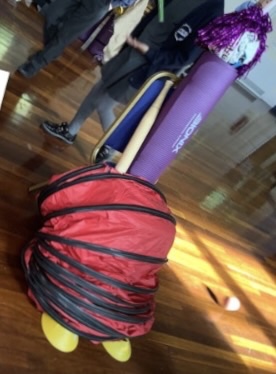Learning intention
- To problem-solve when constructing 3D artworks.
Success criteria
- I can adapt everyday objects and make them
This content is for subscribers only. Join for access today.
Cambridge Primary Art & Design (0067) Learning objectives
Cross-curricular links
None.
This content is for subscribers only. Join for access today.
Before the lesson
This content is for subscribers only. Join for access today.
Lesson plan
1: Lesson plan
An area for you to put useful resources from the previous lesson
This content is for subscribers only. Join for access today.
Differentiation
Learners needing support
Could consider any physical barriers to children working on a larger scale and ensure support or alternative options are in place; could give some children access to a wide range of materials to help them make choices about what suits them, whereas others may work more confidently on this activity if given fewer choices about what to use.
Learners working at a stretch
Could be encouraged (if possible) to think about the location of their installation and the way that might impact how it appears to a viewer; should be encouraged to try out several ideas rather than copying something from the Pupil video; could be questioned about their intentions as they work e.g. ‘Why did you decide to use that material?’
This content is for subscribers only. Join for access today.
Assessing progress and understanding
Pupils with secure understanding indicated by: showing they are considering
This content is for subscribers only. Join for access today.
Vocabulary definitions
-
concept
The idea behind an artwork.
-
cultural revolution
When a country or group of people make changes to the way their society lives, thinks and behaves.
This content is for subscribers only. Join for access today.
Example work


Whitefield Primary School, Manchester


Whitefield Primary School, Manchester


Whitefield Primary School, Manchester


Whitefield Primary School, Manchester
This content is for subscribers only. Join for access today.
